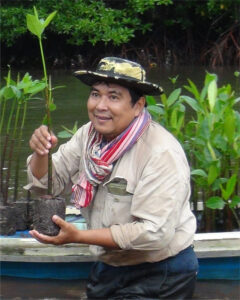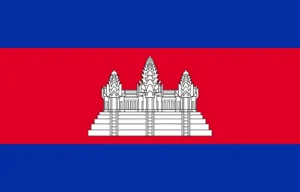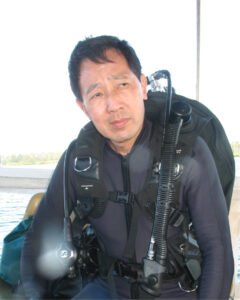Biodiversity officer makes significant contributions to wildlife research and protection in Cambodia
When Mr. Chak Sokhavicheaboth graduated in 1991 with a degree in Forestry Engineering, he had no notion that he would be spending the next three decades being in the frontlines of Cambodia’s efforts to conserve its rich biological resources, as well as helping change the locals’ behavior towards biodiversity protection.
Cambodia, a land of plains and rivers at the heart of Southeast Asia, is known for its bountiful biological resources with nearly 4,000 species of flora and fauna, including more than 100 mammal species. This has been the backdrop of Mr. Sokhavicheaboth’s studies since becoming part of the country’s Ministry of Environment in 1994.
He was among the first researchers in Cambodia to focus on wildlife research, particularly on large mammals and prey species. Mr. Sokhavicheaboth’s efforts has led to significant, tangible results such as the identification of key species in the Northeastern plain of Cambodia. Among his body of work, one would prove to be essential in shaping wildlife studies in the years to come. His book, “Mammals in Cambodia,” which was published in 2000, has become a key resource material for researchers in the country.
But Mr. Sokhavicheaboth did not allow his advocacy of protecting the country’s wildlife to be contained in research materials alone. Instead, he went out to the field to take action and in doing so, inspired many others to follow his footsteps.
As director of the Phnom Prich Wildlife Sanctuary and senior project officer of World Wildlife Fund Cambodia from 2001 to 2010, Mr. Sokhavicheaboth worked tirelessly to cut down criminal activities that threaten Cambodia’s natural resources, including wildlife hunting, illegal logging, land encroachment, and wildlife trapping. In addition, he has led educational efforts to generate awareness among locals about biodiversity conservation, emboldening them to do their role in protecting the environment they live in.
Under the Ministry of Environment, Mr. Sokhavicheaboth trained park rangers on protected area management, wildlife survey, patrolling, and field practices – which are all crucial components in safeguarding the country’s wildlife, forests, and other natural resources.
Armed with his passion and commitment to conserve Cambodia’s biodiversity, Mr. Sokhavicheaboth has also pushed the envelope in managing various community protected areas, whose residents greatly rely on natural resources for their livelihood.
One of his valuable contributions involved the Greater Mekong Subregion Conservation Project, where he helped locals propagate mangrove and other seeds in the community protected area. He was also vital in establishing community protected areas, recognised by the Ministry of Environment, in the provinces of Koh Kong and Mondulkiri. Within these areas, Mr. Sokhavicheaboth has helped residents by conducting livelihood assessments and developing a patrolling system that was needed to deter environmental crimes.
Showing no signs of slowing down, Mr. Sokhavicheaboth is also known as an inspiring presence in various environmental pursuits. This includes implementing reforestation programmes at schools located in different provinces such as Mondulkiri, Kampong Cham, and Battambang.
Amid all these, Mr. Sokhavicheaboth continues to carry out his research and writing passion projects. In addition to authoring “Mammals in Cambodia,” he recently published “Guidebook on Spices in Cambodia,” focusing on plants that have been used as spices in the country since the ancient times. Launched in May 2022, the book centers on more than 40 plants, explaining their origins and their benefits both for medicinal use and as popular ingredients in traditional and modern-day cooking.


























